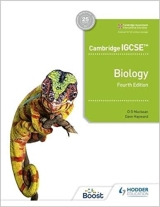|
Here you will find the answers to the 'in-text' questions which occur in IGCSE Biology (2nd edition) and GCSE Biology (3rd edition) by D. G. Mackean, published by Hodder Education, London, UK. Chapters: | Index | 1 | 2 | 3 | 4 | 5 | 6 | 7 | 8 | 9 | 10 | 11 | 12 | 13 | 14 | 15 | 16 | 17 | 18 | 19 | 20 | 21 | 22 | 23 | 24 | 25 | 26 | 27 | 28 | 29 | 30 | 31 | 32 | 33 | 34 | 35 | 36 | 37 | 38 | 39 | 40 | 41 | |
Chapter 24. Applied geneticsPage 212 1. Good characteristics could include: fertility, growth rate, disease resistance, wool texture, wool length. 2. The plant breeder would be begin by crossing the two varieties. The outcome would depend on which of the genes were dominant and which recessive. (In fact it would almost certainly be a group of genes for each characteristic). Assuming that the long stalk gene (L) and the good ear genes (G) are dominant, the genotypes LLgg and llGG would produce LlGg offspring, which would combine both desirable characteristics but would not breed true. If the parents were heterozygous for the dominant gene Llgg and llGg. There would still be desirable combinations of L and G among the offspring but in much smaller numbers (one in four). 3. The F1 seeds will be heterozygous for the desirable characteristics and will not breed true. |
Downloads |
| Search this site |
| Search the web |
To contact me please email: DonMackean@biology-resources.com
© Copyright D G Mackean & Ian Mackean. All rights reserved.
